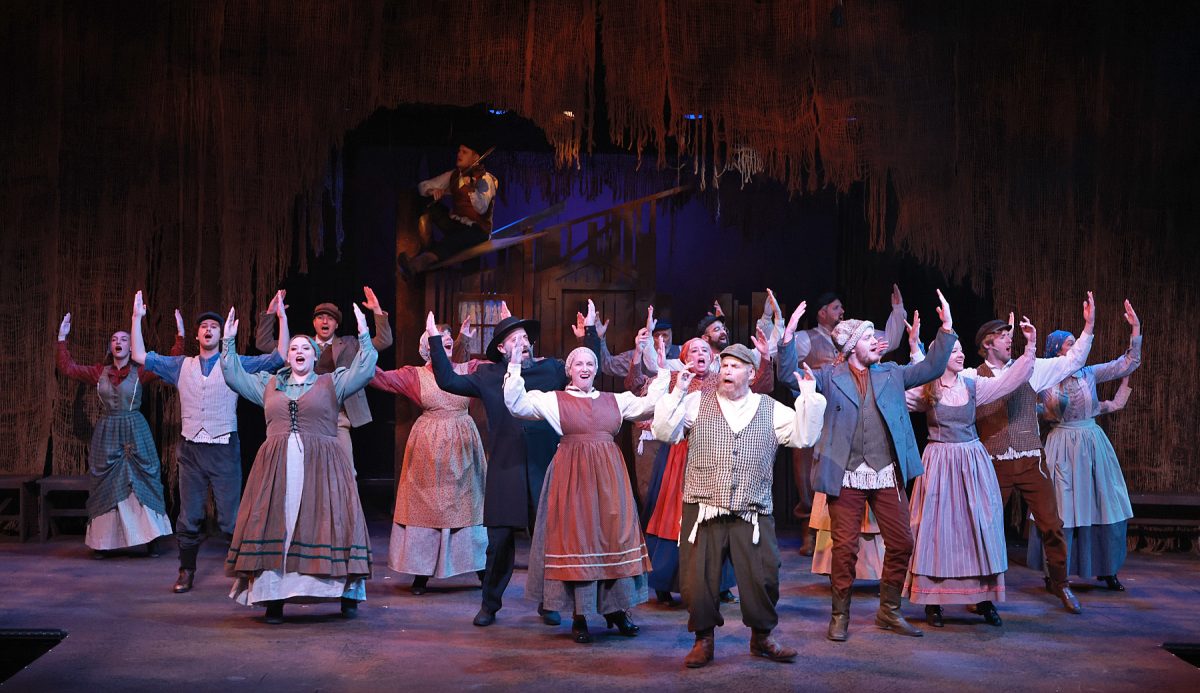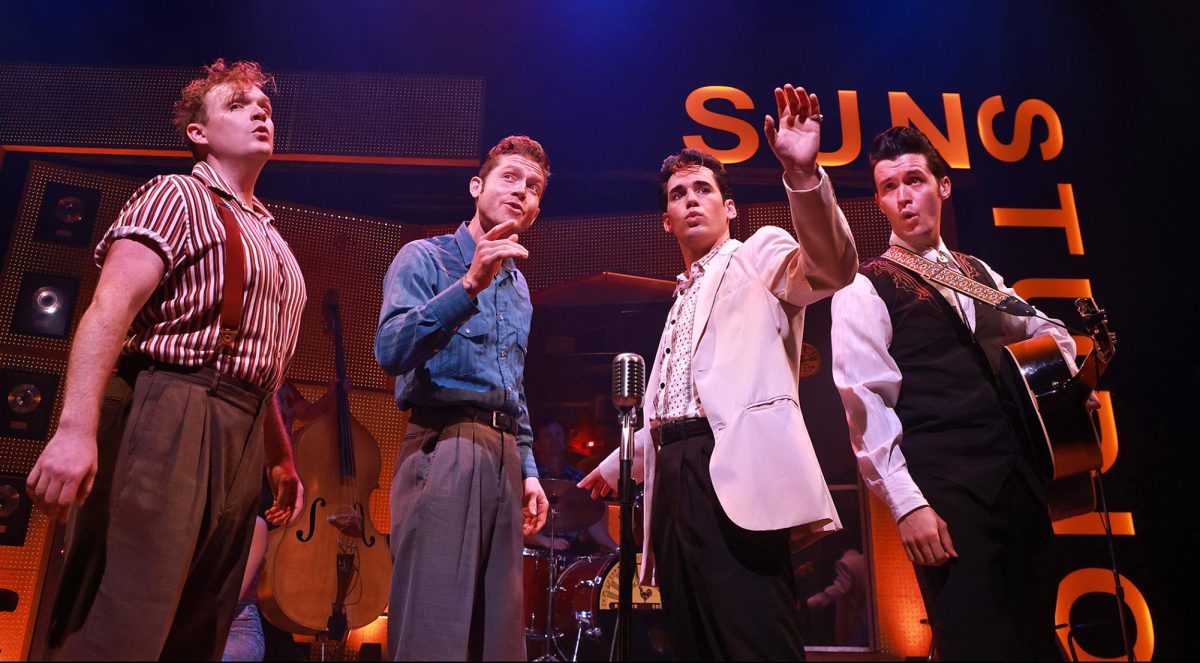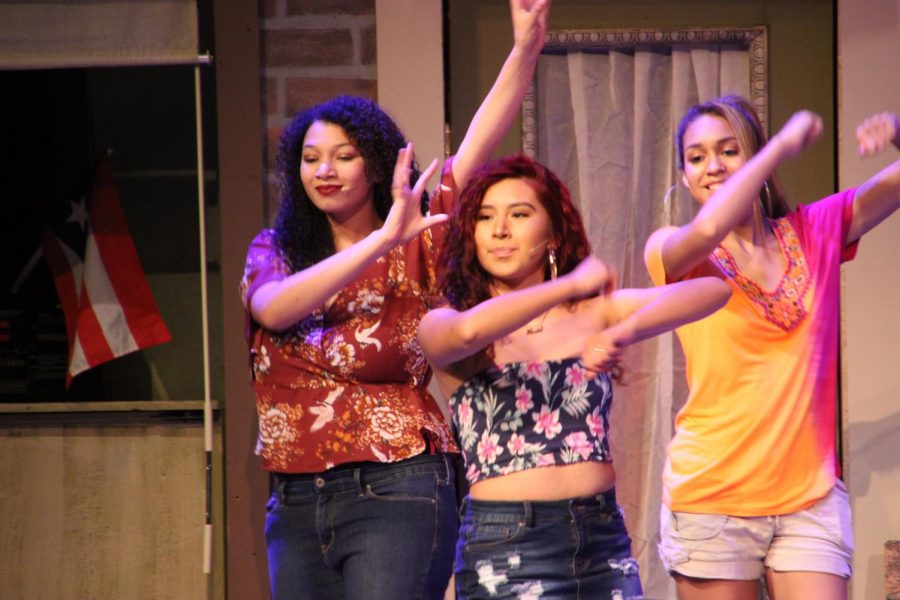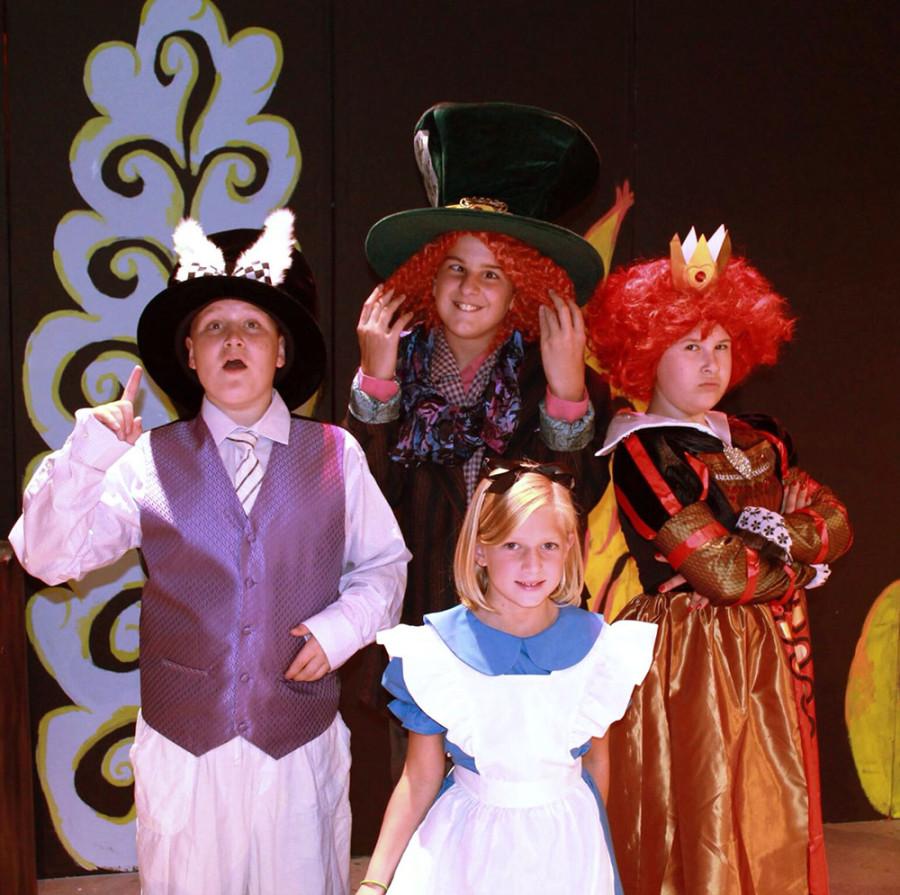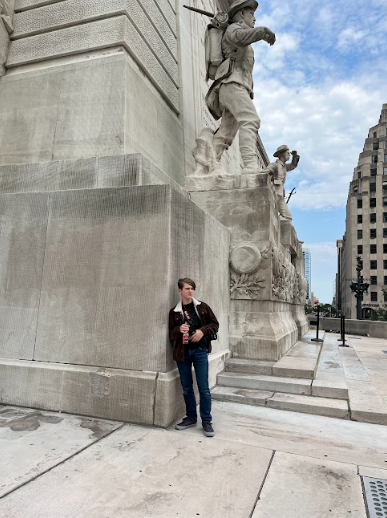From October 10th to November 24th, the Beef and Boards Dinner Theater’s production of Fiddler on the Roof is running. Fiddler is, for the most part, an annual show for the theater and always a great success.
The musical began on Broadway in 1964, and instantly received critical and commercial acclaim. It ran on Broadway for ten years before Grease surpassed it, but has also had several on-and-off Broadway revivals for the six decades since. It won nine Tony Awards for its initial run, and is still widely celebrated to this day.
Fiddler on the Roof tells the story of Tevye the Milkman, a poor man living in the Jewish village of Anatevka in 1905 (the year isn’t explicitly stated within the play; having the exact year isn’t important). Tevye, and the small population of the village, are devoutly religious and bound to each other through age-old traditions that they follow to the word. Tevye has had five daughters with his wife Golde, and through the duration of the story three of them come of marrying age. While they are required by tradition to have a “match” found for them by a matchmaker, Tevye finds himself breaking the sacred codes in order to give his daughters true happiness.
The story is steeped in the underlying theme of how change affects people, and how even the most sacred and revered of traditions can keep people from growing. Multiple times throughout the story, Tevye has lengthy internal monologues that demonstrate his immense displeasure with breaking the codes he has spent his entire life with, yet those moments are followed with showing how his decisions grow the community. One of the show’s best moments occurs when a young man waltzes with one of Tevye’s daughters in blatant ignorance of the rule that a man and woman cannot dance together.
There is a historical side to the story, as the characters are affected by the Russian Empire’s westward expansion and taking over of Jewish settlements during that time. However, while it helps ground the story in a real time period, it isn’t a necessary piece of information to understand the deeper themes of the story.
The Beef and Boards production was quite exciting, to say the least. Here Tevye is played by Douglas E. Stark, one of the Beef and Boards owners. Stark has played Tevye in many of the theater’s productions of Fiddler, and is his favorite role. It is quite evident here, and he really stole the show. He does a fantastic job demonstrating Tevye’s internal conflicts and manages to make them both compelling and comedic. Without him, the show would not have had the same feeling.
Additionally, the supporting cast does a great job as well. Tevye’s daughters all stand out and have their little quirks, and their respective (future) husbands are all vastly different yet all likable.
The set was quite unique. It sat on a turntable that could spin and show three locations, the exterior of Tevye’s house, the interior of Tevye’s house, and a generic room that could be used as a bedroom, bar, or something that was needed. When the lights dim, the set spins, implying movement of the characters. As with other Beef and Boards sets, it is very economical in its use of space, and not bad on the eyes, either.
Fiddler on the Roof is a potent story, and despite its narrative setting, has themes that everyone can relate to in some way. One of the most immediate things to acknowledge is that the titular fiddler only appears in the first scene, perched atop a rickety-looking wooden cabin. It is not necessarily a story about the fiddler playing a fiddle, nor is it about religion, or romance, but about how these things are balanced in a society. They function by following a set path, and their lives begin to change as simple decisions are made that go against the grain of their traditions. Somehow they managed to survive for so long without changing their paths, yet even though they could keep their balance, you have to get down at some point.
Beef and Boards’ production of the show will continue for another few weeks, so if you can, go and see it. At least witness some version of the story, but there is something very special about the stage version. It’s quite cathartic to witness it, especially now. In today’s day and age, the story of people accepting change is an important one to see.


